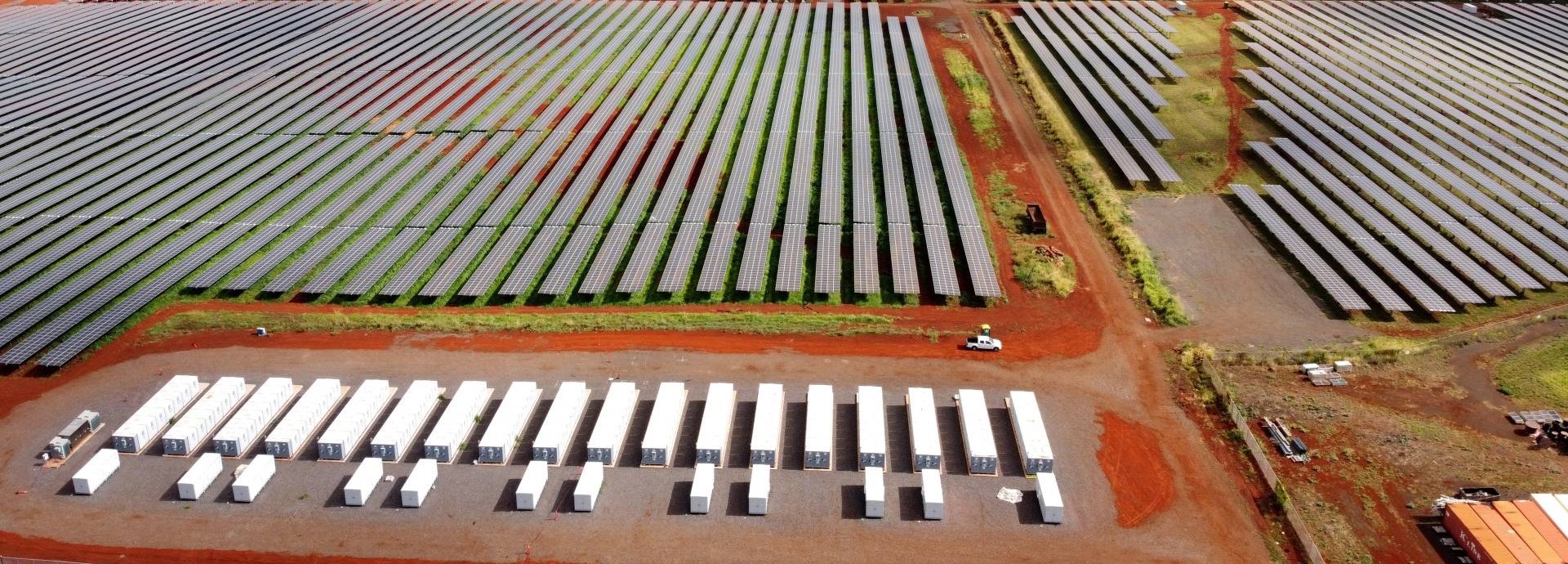

A solar-plus-storage project with DC coupling can have major economic benefits.
The world will add 2,400 GW of renewable energy over the next five years. Not all this energy will be used immediately; some of it will be stored and used later. This energy is stored as Direct Current (DC) but must be converted to Alternating Current (AC) to be used. The big question is where the renewables and batteries should be coupled: before the DC/AC inverter (DC coupling) or after the DC/AC inverter (AC coupling)?
Wilhelm van Butselaar, Area Manager for Energy Storage & Optimisation at Wärtsilä’s Energy Solutions, makes a case for DC coupling. He has worked extensively with solar PV systems and says the benefits of DC coupling also hold true for wind power.
“When you connect solar generation and a storage system to the same DC bus on the DC side of a common inverter, you avoid conversion losses,” he explains. “It’s not efficient if you have to convert energy to store it.”
Efficiency of DC coupling
In a simplified example, when you store solar energy in an AC coupled system it must be converted from DC to AC, back to DC to store it, and then back to AC to use it. This complicated process can cause 9% total energy losses.
A DC coupled system skips one of these steps, because the energy doesn’t need to be converted to be stored and uses other components such as a DC/DC converter with lower losses. Here it stays DC and is only converted to AC when it goes to the grid to be used. The DC coupled system loses 6% during the entire process.
“A DC coupled system can use stored solar energy with up to 3% higher efficiency than an AC coupled system,” van Butselaar continues. “Saving 3% is a huge deal and can have a dramatic positive impact on a company’s bottom line.”
DC coupling enables power producers to fully utilise a solar asset, and avoid “clipping”, or energy not generated due to inverter power limitation. On an AC coupled system, the surplus energy over the inverter threshold is lost. On a DC coupled system the energy that would have been clipped is instead stored in the battery system until it is fully charged.
Equipment costs can also be lower with DC coupling because fewer inverters are required, resulting in lower balance-of-plant costs and a shorter payback time.
Benefits of DC coupling for solar-plus-storage projects
DC coupling is still a relatively new development, and most grid-scale systems with renewables and storage are AC coupled. Previously many projects built the renewable generation first and only added storage later. In these cases, AC coupling often works best.
“The current trend is to pair renewables and energy storage simultaneously, because energy storage is needed to capture the excess energy of renewables,” says van Butselaar. “In many of these cases DC coupling works better.”
As energy systems add more solar and wind, they also need flexibility solutions to balance the intermittent nature of renewables. A great benefit of energy storage is that it can capture excess energy and release it when it is needed later.
Software and hardware in one solution
Renewables and energy storage can add many things to an energy system: efficiency, balance, flexibility, reliability – and complexity.
“Our software, the energy system management platform GEMS, handles this complex environment,” van Butselaar says. “GEMS can seamlessly optimise solar and storage assets, including PV firming using weather forecasting, PV smoothing and energy shifting.”
Van Butselaar points out that this is one of the benefits Wärtsilä brings to the table: Wärtsilä doesn’t manufacture solar panels but provides nearly everything else for a utility-scale solar-plus-storage project, including some of the most advanced software in the world.
“Our customers appreciate all the hard work we’ve put into our hardware, too,” he says. “For example, each country or region has different safety regulations. We do business in more than 180 countries and designed our battery compartments to exceed every requirement so we can use them anywhere.”
Tried and tested in the Peach State
One example of such a major DC coupling project was delivered in 2021 in the state of Georgia, USA. Wärtsilä provided the 40 MW / 80MWh site with the GEMS system as well as the GridSolv Quantum energy storage system, which includes the battery enclosure, cabinet for the inverter and interface, and interconnection busbars and cables.
“The Hickory Park Solar project with approximately 200MWp is a great reference for how we can provide exactly what the customer needs,” van Butselaar says. “I have championed DC coupling in Wärtsilä, but AC coupling has its advantages, too, depending upon the situation. We work to provide valuable solutions to meet specific customer goals, improving both sustainability and bottom line.”
Did you like this? Subscribe to Insights updates!
Once every six weeks, you will get the top picks – the latest and the greatest pieces – from this Insights channel by email.